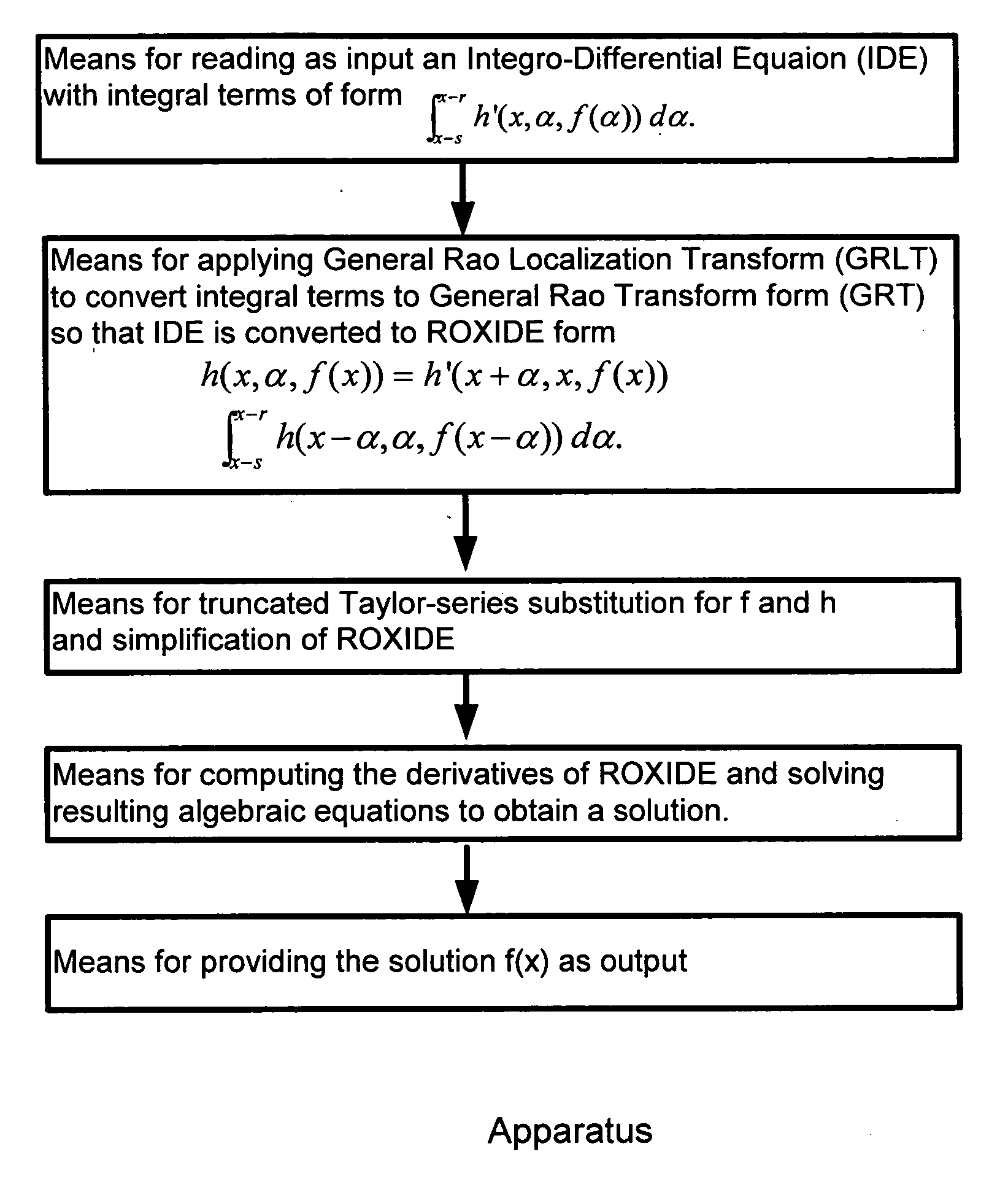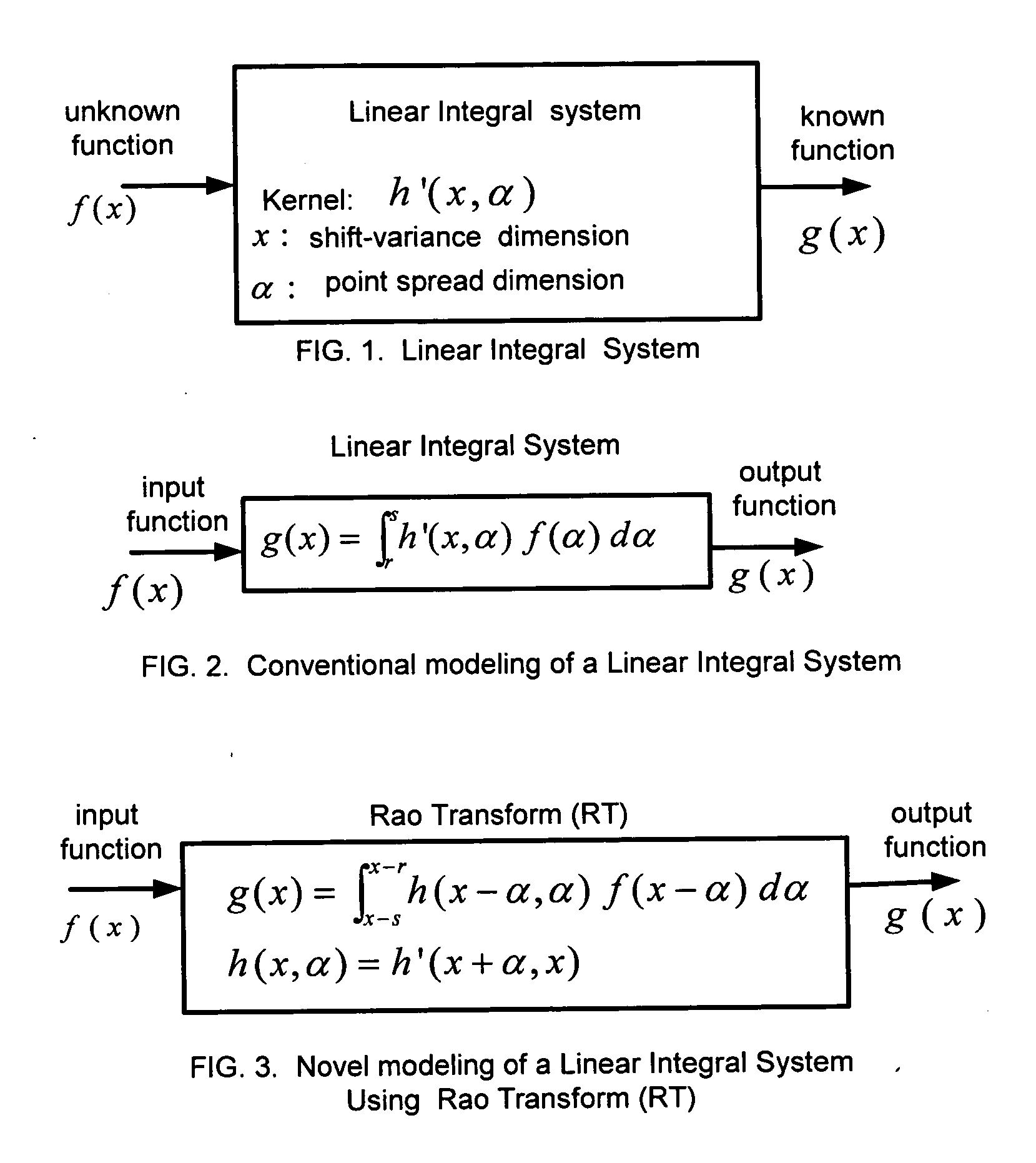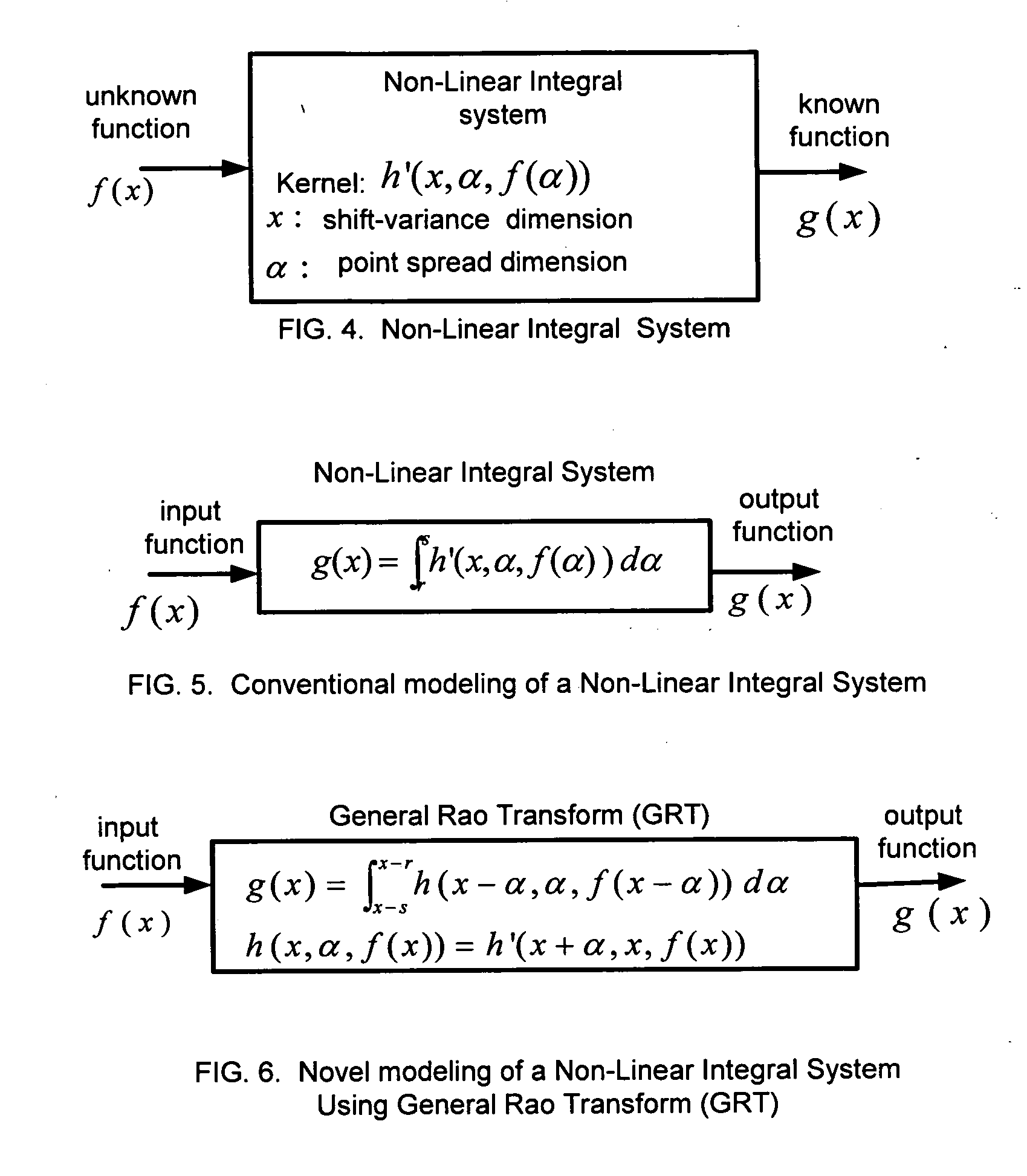Unified and localized method and apparatus for solving linear and non-linear integral, integro-differential, and differential equations
a technology of localized methods, applied in the field of unified and localized methods and apparatuses for solving linear and nonlinear integrals, integro-differential, differential equations, etc., to achieve the effect of efficient computation of the value of the integral term
- Summary
- Abstract
- Description
- Claims
- Application Information
AI Technical Summary
Benefits of technology
Problems solved by technology
Method used
Image
Examples
Embodiment Construction
[0057] An integral or integro-differential equation includes at least one unknown real valued function f(x) where x is a real variable that will be referred to as a shift-variable due to its role in shift-variant image deblurring. The equation also includes, at least one known real valued function g(x), and at least one known real valued kernel function h(x,α) in a special case or in general h(x,α,f(α)) where α is a real variable referred to as a point spread variable due to its role in representing the point spread function of a shift-variant image blurring. The integral or integro-differential equations are solved using Rao Transform (RT) or General Rao Transform (GRT) described later. For simplifying the description of the method of the present invention, x and α are considered to be one-dimensional variables, but they can also be considered to be multi-dimensional variables.
2.1. Rao Transform, Integral Transform, and Rao Localization Transform
[0058] Rao Transform(RT) is defin...
PUM
 Login to View More
Login to View More Abstract
Description
Claims
Application Information
 Login to View More
Login to View More - R&D
- Intellectual Property
- Life Sciences
- Materials
- Tech Scout
- Unparalleled Data Quality
- Higher Quality Content
- 60% Fewer Hallucinations
Browse by: Latest US Patents, China's latest patents, Technical Efficacy Thesaurus, Application Domain, Technology Topic, Popular Technical Reports.
© 2025 PatSnap. All rights reserved.Legal|Privacy policy|Modern Slavery Act Transparency Statement|Sitemap|About US| Contact US: help@patsnap.com



